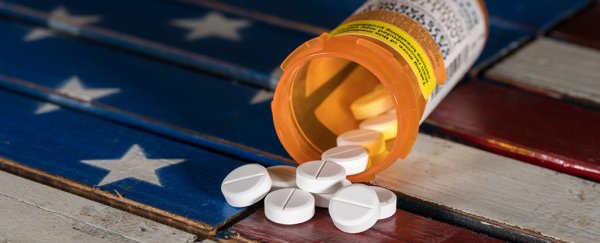It's long been known that drug company payments to doctors influence how many opioid prescriptions they write. But a study released Friday offers the first suggestion they also may be linked to overdose tolls in their communities.
Aggressive marketing of prescription narcotics over the past 20 years has been widely blamed for the staggering death toll of the opioid epidemic. But scant research supported that contention.
The new study, published in JAMA Network Open, shows that counties receiving such payments later experience higher overdose death rates - even when researchers controlled for many other possible influences.
The study did not prove a cause-and-effect relationship; the link between the two is an association.
The study also suggests that consistent, trust-building visits - such as periodic lunches sponsored by drug sales reps - do more to promote prescribing of a company's drugs than high-dollar payments to physicians.
"What seems to matter most wasn't the amount of money doctors were paid, it was the number of times they were paid," said Magdalena Cerdá, an associate professor of population health and director of the Center for Opioid Epidemiology and Policy at the NYU School of Medicine.
Michael Barnett, an assistant professor of health policy and management at the Harvard T.H. Chan School of Public Health, who has studied the role of physicians in the opioid epidemic, called the findings "deeply concerning for the raging [opioid] crisis that we're all quite aware of."
The annual number of prescriptions for painkillers such as oxycodone, hydrocodone and methadone has declined in recent years as physicians, states and public health authorities have responded to the opioid epidemic.
Still, overdoses from those medications killed nearly 18,000 people in 2017, according to the Centers for Disease Control and Prevention, even as illicit fentanyl has become the main driver of the opioid crisis.
Prescription painkillers - rather than heroin or fentanyl - are often the first opioid that consumers are exposed to.
Previous research has linked drug company marketing to opioid prescribing, but the researchers said their study was the first to extend the comparison to overdose deaths.
The new study matched federal data on overdose deaths in every county from 1 August 2014, to 31 December 2016, with payments to doctors for meals, speaking, consulting and travel for the period of 1 August 2013, to 31 December 2015.
The one-year time lag was an attempt to ensure that the payments influenced prescribing, rather than high-prescribing physicians attracting bigger payments from drug companies.
In March, Harvard researchers and CNN released an analysis that showed physicians who prescribed more opioids attracted more payments from drug companies.
Barnett said that regardless of how the payments work, they are influential. Known in the trade as "detailing," these efforts do affect prescriber decision-making, he said.
"What it does is, it creates an awareness… It's going to be closer to the top of your mind. It's just easier to reach for them," Barnett said.
The new study found 434,754 payments totaling US$39.7 million to 67,507 physicians - about 1 in every 12 doctors. Researchers discovered that 1 in 5 family physicians had received this kind of marketing.
"Counties receiving such marketing subsequently experienced elevated mortality," they wrote.
"In addition, opioid prescribing rates were strongly associated with the burden of opioid marketing."
In most of the country, this kind of marketing is legal and unlimited.
Another author of the research, Scott Hadland, a pediatrician and researcher with Boston Medical Center's Grayken Center for Addiction, said drug sales representatives play a legitimate role in educating physicians about medications.
But he said that physicians have other ways to learn about drugs such as conferences and continuing-education courses. To reduce overdose deaths, physicians, drug companies and government may have to regulate marketing, he said.
In 2017, New Jersey instituted a regulation that caps the amount of marketing money prescribers can receive from drug companies. And last year, Purdue Pharma, the maker of OxyContin, halted its marketing of opioids to physicians.
The Pharmaceutical Research and Manufacturers of America, the main trade group for the drug industry, said in a statement that prescribers involved in the management of patients with pain "should be educated about the fundamentals of acute and chronic pain management, the range of available treatment options and relevant benefits and risks."
2018 © The Washington Post
This article was originally published by The Washington Post.
